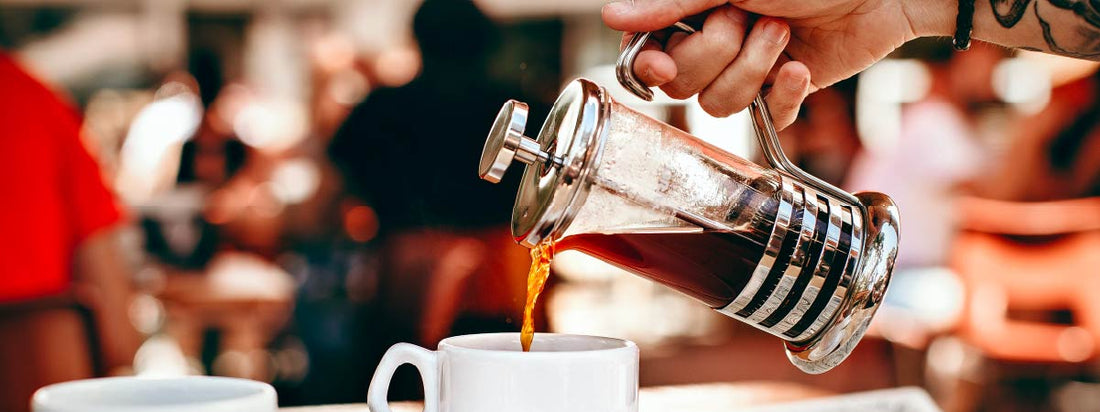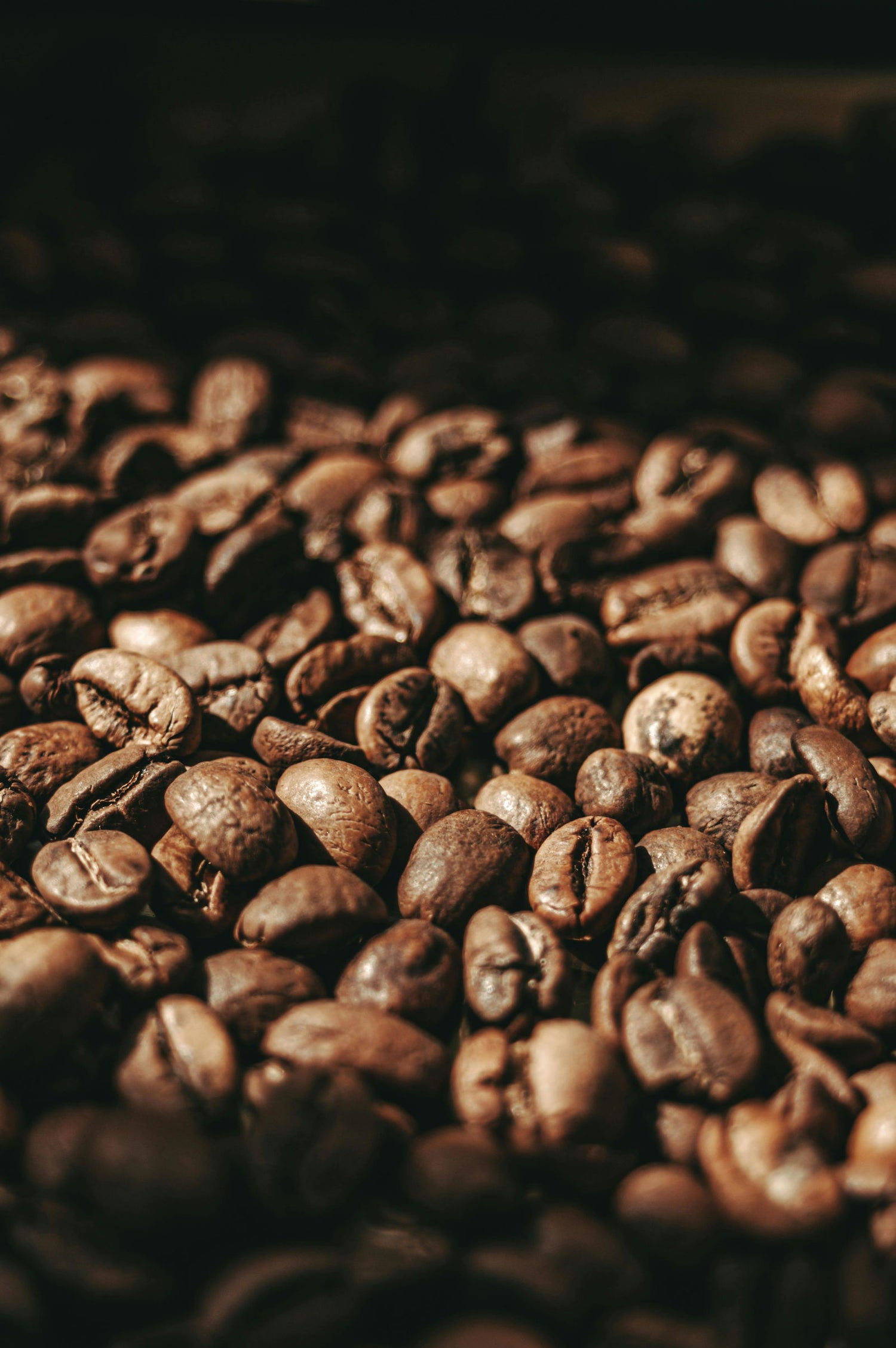Improving Your French Press Coffee Brewing

Share
WHY BREW WITH THE FRENCH PRESS?
The French press is an immersion brewing method, meaning that the coffee extracts while it is submerged in water. After it is allowed to brew for a certain amount of time, the filter is plunged downwards to separate the grounds from the brewed coffee.
Because the filter is more porous than, for instance, a paper filter used with a pour over brewing method, it allows more of the coffee’s oils to pass through. However, this also makes it more likely that there will be small particles of ground coffee at the bottom of your cup.
Amael Candanedo owns the specialty coffee shop Siete Granos in Panama. He recommends that home brewers experiment using a French press: “It allows you to make small adjustments to the variables. It’s inexpensive, and there are all sizes and all materials, so it’s accessible. Finally, you don’t need a whole lot of gadgets to execute the method. It’s very easy to use, and you can make many cups at once.”
When compared to other brewing methods, the French press can also be a lot more forgiving if you aren’t precise. Costa Rican barista Fabiola Solano says: “With some pouring methods, where you have to be much more careful about how you pour water and not to do it too fast. With the French press there’s no such risk. It’s almost infallible.
“For someone who wants to try specialty coffee for the first time, it’s a very good way to start.”

START WITH A STANDARD RECIPE
When experimenting with any brewing method, you should use a standardised recipe to make sure you can repeat the experiment and note any changes.
In case you don’t have one that you use, here’s a standard French press recipe as described by the Specialty Coffee Association. As with most brew methods, you will want to make sure you have filtered water, coffee beans, a grinder, a kettle, a scale, a timer, a spoon, and a serving cup, as well as the French press itself.
This recipe serves three and requires:
- 36g coffee, ground medium to coarse
- 660ml of water, heated to 93.5°C
- Additional water heated to 93.5°C for preheating
For every additional person, add 12g more coffee and another 220ml of water, but make sure your French press is big enough.
Start by preheating the French press with the additional heated water. Discard this water, then add the coffee to the pot. For best results, you should grind just before brewing. Start your timer and pour 540g of hot water into the pot, saturating the coffee completely. Place the lid on the pot without pushing the plunger down.
After two minutes, remove the lid and gently stir the coffee. Add the remaining 120gs of water, then skim off any oils and grounds floating on the surface.
Replace the lid, wait for four minutes, then slowly press the plunger down. Pour and serve your coffee.

CHANGING BREWING VARIABLES & EXPERIMENTING
Because the French press is simple to use, it’s a great starting point for home brewers looking to experiment.
Giancarlo Effio is the owner of Mentiritas Blancas, a specialty coffee shop in Panama. He says that the simplicity of the French press makes it easy for home brewers to understand the factors that come into play when brewing coffee. He says: “There are a few things you can manipulate that will impact your extraction dramatically, and this can help you to better understand how it works.”
Many factors can influence your results, including grind size, water temperature, choice of filter, water quality, and the ratio of coffee to water. Playing around with one or more of these elements will change how your coffee tastes. For example, if you find the coffee to be too bitter, it may have over-extracted. Try using a coarser grind. Conversely, if it’s watery or sour, it may have under-extracted, and a finer grind may result in a fuller flavour.
Giancarlo explains: “When you change one of these factors, you’re going to see interesting changes in the cup. And these are factors that come into play with all extraction methods, but with the French press, it’s much easier.
“This is because the press itself, due to the way it’s built, has a defined volumetric capacity. So there is a limit to how much water you can use, and that makes it easy for you to create a recipe.”

IMPROVING YOUR CUP
One of the biggest issues with the French press is that it often leaves sediment at the bottom of a cup. The easiest way to improve coffee brewed in a French press is by removing or reducing this sediment.
Most of the time, this is an issue with the quality of your filter. Changing the mesh filter that typically comes with the French press is one option, but you can also add an additional cloth or paper filter into the pot before brewing. Alternatively, you can decant the coffee through a paper or cloth filter into a server once it has brewed.
As well as this, you can also skim or “break” the crust that forms at the top of the pot just before you plunge. This will force more of the sediment down into the bottom of the cup, meaning that it won’t escape the filter. Some people even recommend skimming this crust once while the coffee is brewing, and then again just before you plunge.

USING YOUR FRENCH PRESS TO BREW OTHER DRINKS
The French press is a lot more versatile than most people expect. With a little tweaking, it can even be used to create a wider variety of beverages.
For example, if you don’t have an espresso machine to hand, you can use your French press to make a more concentrated coffee for use in a cappuccino or any other coffee-based drink. Just use less water and more coffee to create a more concentrated brew. It’s by no means a true espresso, but it can be a decent home brewed substitute.
You can also use your French press to create the steamed milk and foam for coffee beverages, and even separate the two. This means you can recreate coffee shop cappuccinos and lattes at home.
You can even use your French press to make cold brew coffee. Start by using room temperature, filtered water with your choice of coffee grounds, and let the brew rest for between 16 and 24 hours before you plunge. Use a coffee to water ratio of somewhere between 1:4 and 1:5.
Giancarlo also says he sometimes adds dehydrated fruits when brewing French press coffee, by infusing the water with the dried fruit. Kiwanda Café recommends combining one litre of room temperature water with “one or two servings” of finely chopped fruit and letting it rest for around two hours. After this time, the water can be filtered and used to brew coffee.

The French press might be considered a simple brewing device, but this doesn’t mean that it has to produce simple results. Get your recipe down, and then experiment with some of the points above to see if you can add some flair to your French press.

